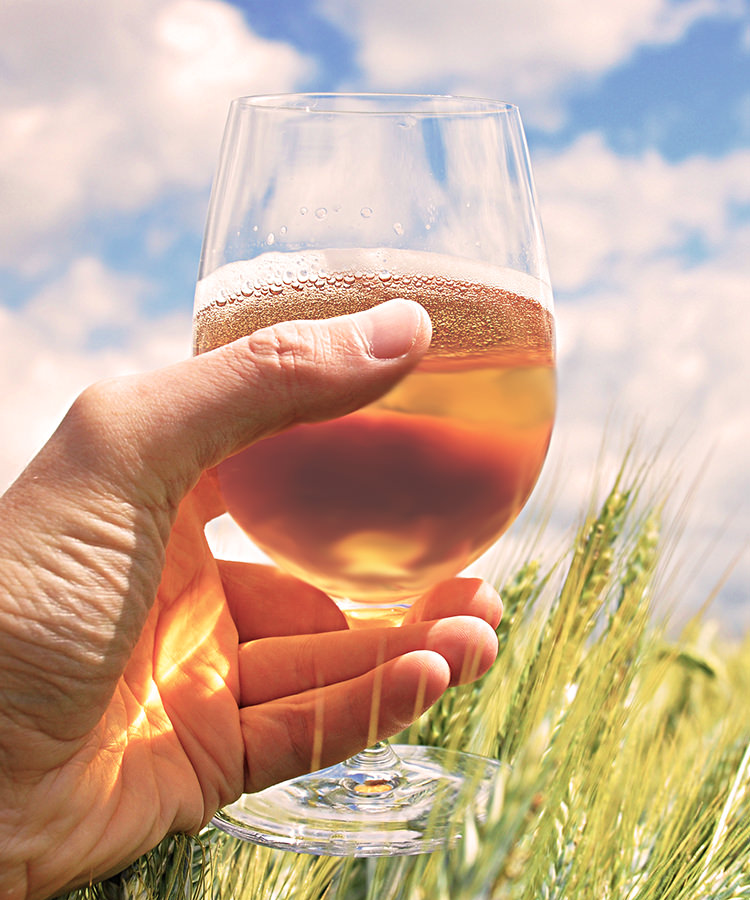Summer is the season of wheat beers. The refreshing German style can be found in beer gardens across the country. So what is it about wheat beers, and what’s with all the variation in the style? Here’s everything you need to know about wheat beers but were too embarrassed to ask.
What is a wheat beer?
A wheat beer is any beer made up of at least 50 percent wheat, which is a much higher proportion than other beers that are primarily made of barley, rye, or adjuncts like rice and corn. Wheat beers come in as many styles as you can imagine, but in general, they’re light, summery, and refreshing.
What’s the difference between all the different varieties of wheat beers?
The first wheat beers started in Germany. Since then, the style has branched off in many different directions. Here are some of the most popular.
Hefeweizen: A Bavarian style that’s light in color and cloudy. The yeast used for hefeweizens adds banana, bubblegum, and clove notes to a beer. Some examples are Paulaner Hefe-Weizen and Kellerweis from Sierra Nevada.
Dunkelweizen: A hefeweizen that uses a more roasted malt, which makes it a slightly darker, brown beer (dunkel means dark in German). A lot of the flavors of a hefeweizen are there like banana and clove, but there’s also caramel and roasted notes. Some examples are Sam Adams Dunkelweizen, Shiner Holiday Cheer from Spoetzl Brewery, and Leavenworth Boulder Bend Dunkelweizen from Fish Brewing Company.
Weizenbock: A stronger hefeweizen with more fruit and malt flavors. It can come off as slightly creamy, and the higher alcohol by volume is noticeable. Some examples include Moonglow Weizenbock from Victory Brewing Company and Ayinger Weizenbock.
Witbier: A Belgian style wheat beer that is similar in banana and clove and bubblegum flavors, but also tastes of orange peel and coriander. The most popular example is Hoegaarden, but another good example is White Rascal from Avery Brewing Co.
Berliner Weisse: A northern Bavarian style that’s light and sour. It’s often mixed with fruit. Some examples are Yuzu from New Belgium Brewing Co., Festina Peche from Dogfish Head, and New Glarus Brewing Co.’s Berliner Weisse.
American Wheat: The American version of a German wheat beer. It’s generally lighter and more adaptable (and, of course, there are hoppy versions). Some examples include Sierra Nevada’s Hoppy Wheat IPA, American Expedition from Heritage Brewing Co., Widmer Brothers Brewing’s Hefeweizen, and American Wheat Hefeweizen from Squatters Craft Beers.
Do all wheat beers taste like Blue Moon and Shock Top?
When it comes to wheat beers, Americans are most familiar with Blue Moon, which is owned by Molson Coors, and Shock Top, which is owned by Anheuser-Busch InBev. Those two brands are everywhere, and are usually served with an orange slice. Blue moon is a Belgian style beer that’s lighter than a true Belgian. Shock Top is also a Belgian style beer that’s more citrusy than a traditional Belgian, and also lighter.
Why are wheat beers cloudy?
Wheat beers use ale yeast, which ferments on the top. The yeast and wheat proteins aren’t filtered out of the finished beer, giving it a hazy, sometimes opaque appearance.
Are wheat beers ales or lagers?
Ales.
Are wheat beers healthier?
Just because a beer uses whole wheat, malted wheat, and isn’t filtered, doesn’t mean it’s healthier.
How many calories are in wheat beer?
In general, wheat beers have more calories than, say, an American light macro lager. But at around 170 calories for the the mass-produced wheat beers, the calories are relatively the same as a full-strength beer. Just remember: the higher the alcohol by volume, the higher the calories.
